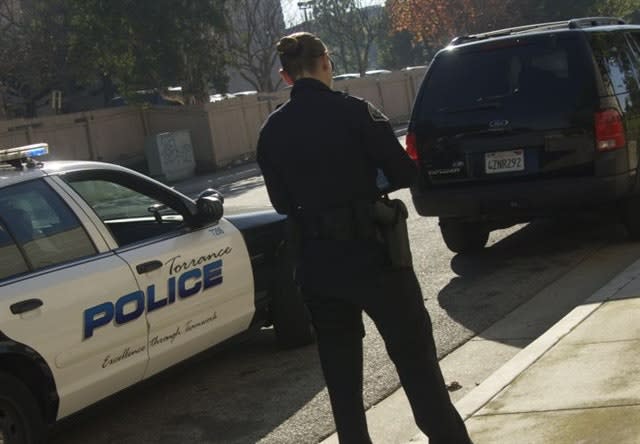The officers weren't told what the research exercise would actually consist of. Instead, they were told they would be videotaped during a traffic stop scenario. The scenario was repeated several times with only slight variation. Each participant was armed with a blank-firing training gun and advised to "respond verbally and tactically as they would naturally.
First up was a vehicle set-up inside a large, inactive Hillsboro warehouse. A patrol car was parked behind a red Ford Taurus occupied by a male driver who was role-played by Scott Buhrmaster, the institute's vice president of operations. The officers were told that the Ford had been stopped for speeding 10 mph over the limit.
A whistle was then blown and the volunteer being tested began advancing from the rear of the violator vehicle to one of several taped lines radiating out on the floor from directly below the vehicle's "B-pillar" door post on the driver or passenger side. Toeing the assigned line, the officer would be positioned at a particular angle relative to the car and driver. "All angles at which officers customarily stand on both side of the vehicle in real life were covered," Lewinski said.
Each officer advanced three times to converse with the driver. The first two times, the violator declared that he was a sovereign citizen and therefore not subject to the officer's authority. He produced a flurry of official-looking documents from the Sovereign Nation and vehemently argued for a minute that the officer had no right to stop him or to enforce any law against him.
"On the first approach, the officers were pretty much on red alert, not knowing what to expect," Buhrmaster told Force Science News. "The second time up, they seemed to be mostly thinking about all the confusing, extremist paperwork I'd given them and how to deal with it."












